- Home
- Louis L'Amour
Sacketts 00 - The Sackett Companion (v5.0) Page 11
Sacketts 00 - The Sackett Companion (v5.0) Read online
Page 11
Actually, the men were scattered in three buildings: in Jim Hanrahan’s saloon and in the two stores, that of Rath & Wright, and another operated by Myers and Leonard.
The attacking Indians were largely Kiowa, Comanche, and Cheyenne, led by Quanah Parker and Lone Wolf. The one who instigated the attack was a medicine man called Isatai, and Isatai had been making big medicine. His idea was to gather all the Indians together and drive the white man east of the Mississippi, out of Indian country forever.
He claimed his medicine was good, that he could protect the others from injury, and that the time had come.
Many Indians were skeptical. They then suggested that if the attacking party, variously estimated at seven hundred to onethousand men, could wipe out the buffalo hunters at Adobe Walls, the rest of them would join in the drive to sweep the country of white men. First, though, Isatai had to prove his medicine was good. When the fight began nearly one thousand Indians attacked, with probably twice that number as spectators.
In the stores and the saloon at the time were thousands of rounds of ammunition, food supplies, and whiskey enough to last for a month or more.
What happened next has never been fully explained. In one of the stores where a number of men were sleeping, there was a sharp report. It awakened everybody, who believed the ridgepole had cracked. By the time they discovered that nothing was wrong, Billy Dixon, then twenty-three years old, decided it was no use trying to get back to sleep when no more than an hour later he would be packing to leave for the hunting grounds. He decided to get his picketed horses, pack up, and be ready to leave at daylight. He went outside and walked to where his horses were. He was leading them back when his eye caught a hint of movement. He glanced around and against the first gray light of dawn he glimpsed a long line of charging Indians, still some distance off but coming at a dead run. Dixon dropped the lead ropes and leaped for the door. He made it just in time.
The Indians swept around and among the buildings. The two men asleep in their wagon were killed as they grabbed for their rifles. A large dog was also killed, and then the fight began.
Isatai could not have chosen a worse spot to begin his attack. The twenty-eight men at Adobe Walls were all dead shots. Most of them had already put in two or more seasons on the buffalo prairies firing thousands of rounds in the killing of buffalo. Most of them were veterans of other Indian battles and several were men whose names would make western history, such as Billy Dixon himself and Bat Masterson, then just seventeen. They were securely lodged behind log or sod walls and their firing was done from rests where they could take their time and pick their targets.
The shooting continued for several days but the riflemen were too good and their position too secure. The event that may well have broken the back of the effort took place on the second day, when a party of Indians appeared on a ridge some distance away and Billy Dixon was asked to see what he could do. Using his Sharps Big Fifty buffalo gun Billy knocked an Indian from his horse at a distance, checked a few days later by an Army officer, of seven-eighths of a mile.
By the middle of the fifth day hunters were gathering from all over the area, and over a hundred of them had come to the aid of the men at Adobe Walls. By the time the Army arrived, the fight was over.
The casualties among the hunters amounted to four men and a dog: the two Shadler brothers, killed in the first attack; one man killed later; and the last was the husband of Mrs. Olds, killed when his own gun discharged accidentally.
CROSS TIMBERS: Two remarkable belts of timber beginning in Oklahoma and running south to the middle of Texas. Dense stands of timber, they were some distance apart, each varying in width. As they were often as much as fifteen miles in width they presented a formidable obstacle to travel. They were a haven for much wildlife, including some of the last grizzlies found in Texas. They were famous landmarks both for the Indian and the white man. In the eastern Cross Timbers the trees were larger, the growth more dense. A good part of the timber was blackjack or post oak.
LLANO ESTACADO: The so-called Stake Plain. Literally, it includes most of the Panhandle of Texas, a vast uplift protected from erosion by the Cap-Rock. Flat as a floor for many miles, it was in the beginning virtually without water, hence uninhabited and rarely visited by either Indian or buffalo. The origin of the name has been much debated. One quite logical explanation is that it was so named because of the necessity of staking one’s horse as there was no tree or shrub to which a horse could be tied. Another explanation is that the earliest travelers placed occasional sighting stakes so they could maintain their direction. A dozen other explanations have been offered. Read them all and take your pick. You are as likely to be right as anyone else.
SERBIN, TEXAS: In Lee County, a town founded by Wendish Lutherans in 1854. John Kilian was the leader of a group of some five hundred of the Wends who settled there and built a rock church that was still standing when I last was there. The church was built before the Civil War. Nolan Sackett was jailed there for a shooting, but the Wendish folk had reason to favor him and he was allowed to escape.
RABBIT EAR MOUNTAIN: An important landmark on the Santa Fe Trail. The peaks give the impression of rabbit ears from a distance, but it is also said that a Cheyenne chief called Rabbit Ears was killed near there and buried on the mountain, if such it could be called. The mounds are situated in Union County, New Mexico, north of Clayton.
Just north of the mountain in a box canyon is a green pool covered with a thick scum. The walls of the canyon have been blackened by fire, and there is an opening, very uninviting, about three to three-and-a-half feet in diameter. It is possible there was oil or gas here that may have been set afire by lightning or some other cause. The situation is virtually as related in the story.
RABBIT EARS CREEK: Creek heads up near Rabbit Ears, flows through a part of Texas and into Oklahoma. Gregg lists it as a stopping place on the Santa Fe Trail.
SLANTING ANNIE: A frontier prostitute who followed the boom camps. So-called because one leg was shorter than the other. An historical character.
OLLIE SHADDOCK: A freighter at this period; kin to the Sacketts; he appears in THE DAYBREAKERS.
MORA: A pleasant town in New Mexico; Tyrel Sackett located there, and it was visited by Tell Sackett. Orrin came here with Tyrel. It was the town where the mountain man Ceran St. Vrain, partner of Kit Carson, located.
ROMERO, TEXAS: Settled by Casimero Romero, a sheepman; an area where Comancheros operated. Just a few miles from the New Mexico border.
LOMA PARDA: Now a ghost town; a drinking town for soldiers from Fort Union. On the Mora River, and a rough place in its day. Usually off-limits to soldiers. It was a hang-out for thieves, gamblers, and formerly a base for Comancheros.
TINKER KNIFE: A knife made by the Tinker, a pack peddler in the Tennessee Mountains. Made from a variety of steel known only to the Tinker, but derived from the same steel used in the Toledo and Damascus blades. Most of the steel in those famous swords and scimitars was imported from India. The Tinker made few knives and only for close friends or someone he admired.
NATHAN HUME: A trader to Santa Fe who, when his wagon train was attacked, buried the gold he carried. He was killed, but two others escaped.
THE KARNES, SYLVIE, RALPH, AND ANDREW: Connections by marriage to Nathan and Penelope Hume. Sylvie was a woman who knew what she wanted and would stop at nothing to get it. A woman totally without conscience, she was perfectly prepared to murder anyone who got in the way.
Ralph, her older but subordinate brother, was cut from the same pattern but a follower rather than a leader. Andrew was younger, not very bright, ready to do what Sylvie suggested.
STEVE HOOKER: A small time crook; worked at something most of the time but was simply watching for a chance to steal.
TEX PARKER, CHARLIE HURST: Allies of Hooker, and of the same type. Stole horses, cattle, or anything lying loose, and candidates for a necktie party.
TOM FRYER, NOBLE BISHOP, AND FERRARA: Outlaws of ano
ther sort. Tough, capable and dangerous, but careful.
PENELOPE HUME: Nathan was her grandfather, and she inherited the papers that told where the gold could be found. A determined young lady whose future rested with that gold. She was alone in the world, and in the West of the 1870s there were few jobs for women of any age. What little she had was invested in this trip west and the effort to find the gold. Jacob Loomis was riding with her, but could he be trusted?
BOGGY DEPOT: In southeastern Oklahoma near the towns of Atoka and Caddo. It was an important town, growing from a log house into an important trading post and a Civil War army station. It was a Choctaw-Chickasaw town settled about 1837 after the move of the Indians from the Georgia-North Carolina-Tennessee area. The town became a post office in 1849. The home of Chief Allen Wright was destroyed by fire in 1952, and it was he who named Oklahoma. His granddaughter, Muriel Wright, was an Oklahoma historian and a remarkable woman whom I was proud to know as a friend.
Chief Wright translated several books into the Choctaw language and contributed much to his people and to the state of Oklahoma.
The present town is located a couple of miles from the original site of Boggy Depot. During the Civil War, Confederate troops were stationed there, and the town is referred to many times in early western literature. The town was named for Clear Boggy Creek.
INDIAN TERRITORY: After the removal of the Five Civilized Tribes from their homeland, much of Oklahoma was designated as Indian Territory. Influenced by Scottish and Irish traders who came among them in the early years, the Indians of the Five Civilized Tribes—the Cherokee, Choctaw, Chickasaw, Creek, and Seminole—had become so successful as to arouse jealousy of some of their less ambitious neighbors. The Indians owned mills, mines, steamboats on the rivers, and some of them had most beautiful homes. They also had plantations and farms, and owned a considerable number of slaves.
Gold had been discovered some time previously but the find was kept quiet until much later. When the news got out, it led to further agitation to move the Indians out of the country. In a tragic journey over the Trail of Tears, the Indians were removed to Oklahoma, permitted to take only what they could easily carry.
By this time they had their own written language and a newspaper printed in both English and Cherokee. The gold discovery came to nothing but the area lost some valuable citizens who were to contribute much to art, literature, business, and politics.
A minor but interesting story was that of John Rollin Ridge, a Cherokee, who created the story and the character known as Joaquin Murietta, taking several of the members of Murietta’s band from the names of actual persons associated with Tiburcio Vasquez, an outlaw who was the real thing.
BILL COE: An outlaw, horse thief, and cattle thief. A good-looking man, and game. He operated an outlaw gang from a rock fortress built near the border of Colorado and New Mexico, and his gang raided and robbed with impunity. Charlie Goodnight looked on them with some disfavor and there were reports that Coe intended to kill him. For three years or so they operated from the house on the Cimarron, ignoring the vigilantes organized to handle just such problems. Coe was captured by soldiers who delivered him to a jail. During the night vigilantes took Coe from the jail to a nearby tree. When he was taken from the jail, somebody offered him a blanket but he refused and suggested, “Somehow I don’t think I’ll be needing it.”
A few weeks later some of the other members of the gang also encountered a Reform Society with a rope and the Coe house became a roost for owls.
FLINCH: A tough Indian who could wait until the time was right.
JACOB LOOMIS: Who was to know what happened to Penelope? Who would there be even to ask questions? And with the gold he could go where he wished, live as he wanted. It all seemed very simple. It seemed foolproof. The trouble was that all such plans look good until the imponderables appear, those little things you didn’t expect. And the man with a criminal mind is an incurable optimist. He always believes things are going to turn out right for him.
HARRY MIMS: A tough, salty old man who knew more than anyone believed.
OSCAR REINHARDT: A teamster, and a substantial citizen skilled at his job.
THE GENERAL AREA: This corner of New Mexico shows much evidence of ancient occupation. Spear heads have been found in close proximity to the bones of mammoths, and there are many indications that Indians of all periods found this a good hunting ground, through several changes of climate. Folsom points, one of the oldest varieties found on the continent, were discovered near here.
Buffalo roamed here in the thousands and even today antelope can be seen.
Uncle Dick Wootton, mountain man, established his station and toll road at Raton, and Governor de Anza pursued Cuerno Verde, the Comanche chief, through here and won a great battle near Ojo Caliente.
Not far to the north is Wet Mountain Valley where Jubal Sackett located his trading post, and the Greenhorn Mountains close by are named for that Comanche chief, Cuerno Verde. This area was also traveled by Flagan and Galloway Sackett. Their story is told in THE SKY-LINERS.
THE LONELY MEN
First publication: Bantam Books paperback, May 1969
Narrator: William Tell Sackett
Time Period: c. 1875–1879
When Tell Sackett rode into Mexico he believed he was riding to rescue young Orry Sackett from the Apaches, risking his life and the lives of his companions in the effort.
He had not known Orrin had a son until Laura Pritts Sackett told him so, but he knew of the marriage. Orrin was in Washington, D.C. and if anybody was going to rescue the boy it was up to him.
What he did not know was that he was about to become a victim of a woman’s hatred, a woman who plotted to kill him because he was Orrin’s beloved brother, and who cared not in the least that others might die as well.
Tampico Rocca, Spanish Murphy, and John J. Battles were the kind of men one was likely to find in places like Tucson, El Paso, or the border towns. Their kind might be found anywhere in the West, driving stage, serving in the army, prospecting for gold, or herding cattle. They had gotten together in Yuma and rode east for mutual protection, now that their casual meeting had been cemented by the smoke and blood of battle, and each had found much to respect in the others. When Tell Sackett announced his intention of riding into Mexico to find his nephew, they had no other thought than to go with him. His trouble was their trouble.
WILLIAM TELL SACKETT: Left the mountains of Tennessee to take part in the Civil War. Joined the Sixth Cavalry of the Union, served on detached service in other areas. Also in SACKETTS LAND, MOJAVE CROSSING, THE SACKETT BRAND, TREASURE MOUNTAIN, and LONELY ON THE MOUNTAIN, and briefly, as just another working cowboy, in DARK CANYON.
He could barely read and write, having attended school for only a few months on several different occasions. He could ride, rope, shoot any kind of a gun, and was skilled with stock. He grew up hunting, trapping, and fighting. Six feet three inches, he was lean, but broad-shouldered. Essentially a lonely man, he was shy with strangers. Accustomed to hard work, he preferred to be let alone to work at whatever he was doing, from punching cows to mining.
He liked women but was uncomfortable around them. At dances or parties he could usually be found somewhere in the background, simply enjoying the music and watching the others, and was content to have it so.
Of the great love of his life he rarely spoke, and even his brothers knew nothing of her. He met her and lost her during his Civil War days.
Although women were drawn to him he did not realize it and would not believe it if he was told. In fact, the suggestion would both astonish and amuse him.
FRONTIER WAYS: The skills Tell acquired were simply those of many such men who lived his kind of life. They learned to do by doing, repairing wagons, splicing rope, shoeing horses, building cabins or fence lines, repairing or altering their own firearms, treating minor cuts or abrasions on themselves or their stock. More serious wounds they would treat if there was no doctor near, and the n
earest was apt to be a hundred or more miles away.
The frontier world was a do-it-yourself world, and if anything needed doing you simply did it. If you didn’t know how, you sat down and tried to figure it out. If there was not a woman around, men mended their own clothes, often made their own shoes, and most could make moccasins. Nobody ever bought an axe handle in a store until around the 1880s. A man simply chose the right wood and whittled one himself. He sharpened his own axes, saws, and knives.
To Tell Sackett all this was not new. He had grown up in the Smoky Mountain country, where everybody did for themselves. Folks got together for barn-raisings, quiltings, cornhusking, and the like, but those were social occasions. If there wasn’t a fiddler around, or a banjo or dulcimer, they could always sing their own accompaniment and dance to “play-party” songs like Green Coffee Grows on High Oak Trees. Skip to My Lou, or Hello, Susan Brown!
Aside from the goods peddled by occasional pack peddlers, everything was homemade.
LAURA PRITTS SACKETT: An almost beautiful girl, until you looked again. She idolized her father but the Sacketts helped to defeat his plans to seize land from the Mexican owners. To Orrin Sackett she had symbolized everything he wanted in a woman. He saw her beauty, and read into her what he wanted to find in a woman, never guessing it was not there.
They separated and her hatred grew until she was utterly possessed by it—a hatred not only for Orrin but for Tyrel as well, he who had always known her for what she was. Her hatred grew like a festering wound and when she saw Tell Sackett and realized he knew nothing of what had taken place she saw her chance. Jonathan Pritts had known how to handle rough men and she had some of the same facility, and with it the courage to face them.
How did others see her? Lieutenant Jack Davis was a very young officer and there were few women on the frontier. To him, Laura Pritts Sackett seemed the embodiment of grace, culture, and all a young woman could be. Captain Lewiston reserved his opinions and was a bit more skeptical. Mrs. Wallen had no doubts but she was also puzzled. What was such a woman doing in this Arizona town in the heat of summer when she might be elsewhere? Tucson in the early 1870s was a town where people came for a reason or passed on quickly, going either east or west. Mrs. Wallen found herself liking that tall, easy-moving young man called Tell Sackett. He did handle himself well but gave the impression of being awkward, and he was obviously shy. And Mrs. Wallen was worried. There was something about that Laura that bothered her.

 Novel 1987 - The Haunted Mesa (v5.0)
Novel 1987 - The Haunted Mesa (v5.0) The Haunted Mesa (Louis L'Amour's Lost Treasures)
The Haunted Mesa (Louis L'Amour's Lost Treasures) The Walking Drum (Louis L'Amour's Lost Treasures)
The Walking Drum (Louis L'Amour's Lost Treasures) Fallon (Louis L'Amour's Lost Treasures)
Fallon (Louis L'Amour's Lost Treasures)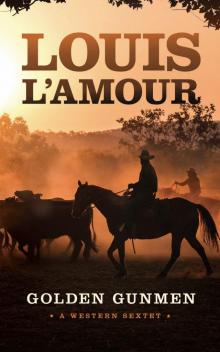 Golden Gunmen
Golden Gunmen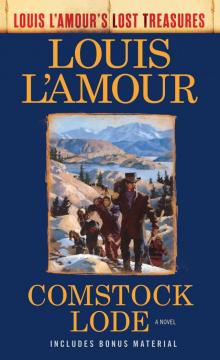 Comstock Lode
Comstock Lode The Lonesome Gods (Louis L'Amour's Lost Treasures)
The Lonesome Gods (Louis L'Amour's Lost Treasures) No Traveller Returns (Lost Treasures)
No Traveller Returns (Lost Treasures) Yondering: Stories
Yondering: Stories The Strong Land
The Strong Land Reilly's Luck (Louis L'Amour's Lost Treasures)
Reilly's Luck (Louis L'Amour's Lost Treasures) The Man Called Noon (Louis L'Amour's Lost Treasures)
The Man Called Noon (Louis L'Amour's Lost Treasures) Draw Straight
Draw Straight Last of the Breed (Louis L'Amour's Lost Treasures)
Last of the Breed (Louis L'Amour's Lost Treasures) Taggart (Louis L'Amour's Lost Treasures)
Taggart (Louis L'Amour's Lost Treasures) The Hopalong Cassidy Novels 4-Book Bundle
The Hopalong Cassidy Novels 4-Book Bundle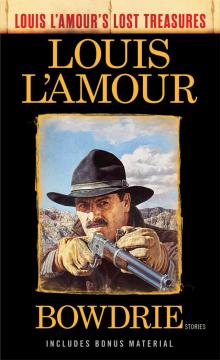 Bowdrie_Louis L'Amour's Lost Treasures
Bowdrie_Louis L'Amour's Lost Treasures Reilly's Luck
Reilly's Luck The Ferguson Rifle (Louis L'Amour's Lost Treasures)
The Ferguson Rifle (Louis L'Amour's Lost Treasures) Sacketts 00 - The Sackett Companion (v5.0)
Sacketts 00 - The Sackett Companion (v5.0) The Chick Bowdrie Short Stories Bundle
The Chick Bowdrie Short Stories Bundle Novel 1974 - The Californios (v5.0)
Novel 1974 - The Californios (v5.0)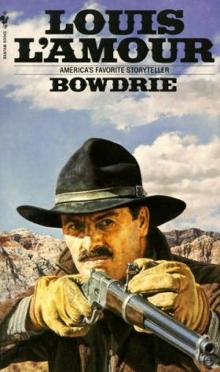 Collection 1983 - Bowdrie (v5.0)
Collection 1983 - Bowdrie (v5.0) Novel 1984 - The Walking Drum (v5.0)
Novel 1984 - The Walking Drum (v5.0) Over on the Dry Side
Over on the Dry Side The Walking Drum
The Walking Drum Novel 1963 - Catlow (v5.0)
Novel 1963 - Catlow (v5.0)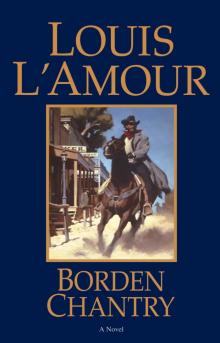 Borden Chantry
Borden Chantry Collection 1983 - Law Of The Desert Born (v5.0)
Collection 1983 - Law Of The Desert Born (v5.0) Ghost Towns
Ghost Towns Jubal Sackett (1985) s-4
Jubal Sackett (1985) s-4 Novel 1953 - Showdown At Yellow Butte
Novel 1953 - Showdown At Yellow Butte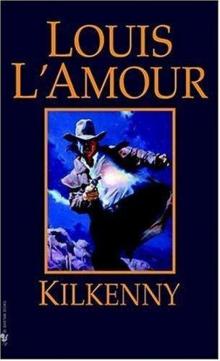 Kilkenny 03 - Kilkenny (v5.0)
Kilkenny 03 - Kilkenny (v5.0)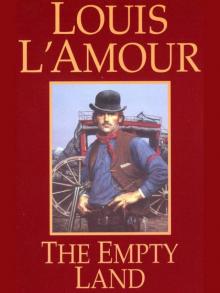 Novel 1969 - The Empty Land (v5.0)
Novel 1969 - The Empty Land (v5.0) Matagorda
Matagorda The First Fast Draw
The First Fast Draw Novel 1950 - Westward The Tide (v5.0)
Novel 1950 - Westward The Tide (v5.0) Ride the Dark Trail s-18
Ride the Dark Trail s-18 Novel 1963 - Fallon (v5.0)
Novel 1963 - Fallon (v5.0) Novel 1964 - Kiowa Trail (v5.0)
Novel 1964 - Kiowa Trail (v5.0) Kilkenny
Kilkenny Riders of the Dawn
Riders of the Dawn Sackett (1961) s-9
Sackett (1961) s-9 Fallon
Fallon Ride the River (1983) s-5
Ride the River (1983) s-5 Mojave Crossing s-11
Mojave Crossing s-11 Novel 1958 - Radigan (v5.0)
Novel 1958 - Radigan (v5.0) The Collected Short Stories of Louis L'Amour, Volume Five
The Collected Short Stories of Louis L'Amour, Volume Five Novel 1953 - Showdown At Yellow Butte (v5.0)
Novel 1953 - Showdown At Yellow Butte (v5.0) Collection 1980 - Yondering
Collection 1980 - Yondering Novel 1957 - Last Stand At Papago Wells (v5.0)
Novel 1957 - Last Stand At Papago Wells (v5.0) North To The Rails
North To The Rails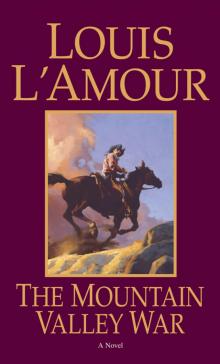 The Kilkenny Series Bundle
The Kilkenny Series Bundle Novel 1972 - Callaghen (v5.0)
Novel 1972 - Callaghen (v5.0) Novel 1970 - Reilly's Luck (v5.0)
Novel 1970 - Reilly's Luck (v5.0)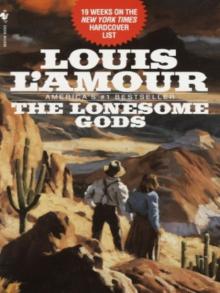 The Lonesome Gods
The Lonesome Gods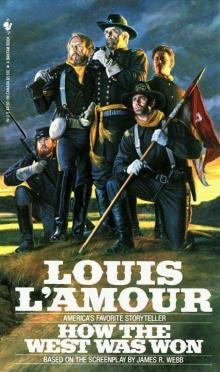 Novel 1963 - How The West Was Won (v5.0)
Novel 1963 - How The West Was Won (v5.0) Collection 2001 - May There Be A Road (v5.0)
Collection 2001 - May There Be A Road (v5.0) Flint
Flint Novel 1968 - Chancy (v5.0)
Novel 1968 - Chancy (v5.0) Volume 1: Unfinished Manuscripts, Mysterious Stories, and Lost Notes from One of the World's Most Popular Novelists
Volume 1: Unfinished Manuscripts, Mysterious Stories, and Lost Notes from One of the World's Most Popular Novelists Novel 1962 - High Lonesome (v5.0)
Novel 1962 - High Lonesome (v5.0) Fair Blows the Wind (Louis L'Amour's Lost Treasures)
Fair Blows the Wind (Louis L'Amour's Lost Treasures) Lando s-8
Lando s-8 The High Graders
The High Graders Collection 1986 - Night Over The Solomons (v5.0)
Collection 1986 - Night Over The Solomons (v5.0) The Collected Short Stories of Louis L'Amour, Volume 3
The Collected Short Stories of Louis L'Amour, Volume 3 Collection 1980 - Yondering (v5.0)
Collection 1980 - Yondering (v5.0) Showdown
Showdown The Quick And The Dead
The Quick And The Dead Novel 1968 - Down The Long Hills (v5.0)
Novel 1968 - Down The Long Hills (v5.0) The Lonely Men s-14
The Lonely Men s-14 Bowdrie (Louis L'Amour's Lost Treasures)
Bowdrie (Louis L'Amour's Lost Treasures) Treasure Mountain s-17
Treasure Mountain s-17 Novel 1959 - Taggart (V5.0)
Novel 1959 - Taggart (V5.0)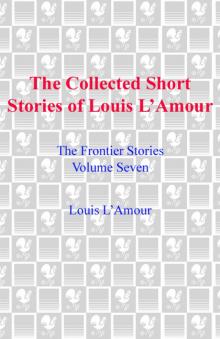 The Collected Short Stories of Louis L'Amour, Volume 7
The Collected Short Stories of Louis L'Amour, Volume 7 Novel 1957 - The Tall Stranger (v5.0)
Novel 1957 - The Tall Stranger (v5.0) Novel 1978 - The Proving Trail (v5.0)
Novel 1978 - The Proving Trail (v5.0) Callaghen (Louis L'Amour's Lost Treasures)
Callaghen (Louis L'Amour's Lost Treasures) Sitka
Sitka Collection 1988 - Lonigan (v5.0)
Collection 1988 - Lonigan (v5.0) The Californios
The Californios Novel 1966 - The Broken Gun (v5.0)
Novel 1966 - The Broken Gun (v5.0)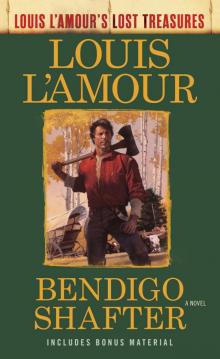 Bendigo Shafter (Louis L'Amour's Lost Treasures)
Bendigo Shafter (Louis L'Amour's Lost Treasures) Novel 1979 - The Iron Marshall (v5.0)
Novel 1979 - The Iron Marshall (v5.0)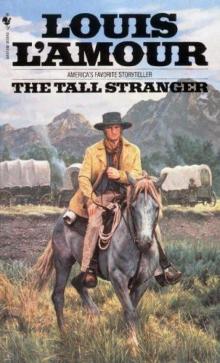 Novel 1957 - The Tall Stranger
Novel 1957 - The Tall Stranger Novel 1965 - The Key-Lock Man (v5.0)
Novel 1965 - The Key-Lock Man (v5.0) Collection 1986 - Dutchman's Flat (v5.0)
Collection 1986 - Dutchman's Flat (v5.0) Lonely On the Mountain s-19
Lonely On the Mountain s-19 Sackett's Land
Sackett's Land The Man Called Noon
The Man Called Noon Hondo (Louis L'Amour's Lost Treasures)
Hondo (Louis L'Amour's Lost Treasures) The Lawless West
The Lawless West The Warrior's Path (1980) s-3
The Warrior's Path (1980) s-3 Novel 1956 - Silver Canyon (v5.0)
Novel 1956 - Silver Canyon (v5.0) The Sky-Liners (1967) s-13
The Sky-Liners (1967) s-13 Mustang Man s-15
Mustang Man s-15 Novel 1971 - Tucker (v5.0)
Novel 1971 - Tucker (v5.0) Off the Mangrove Coast (Louis L'Amour's Lost Treasures)
Off the Mangrove Coast (Louis L'Amour's Lost Treasures) Collection 2005 - Riding For The Brand (v5.0)
Collection 2005 - Riding For The Brand (v5.0) Collection 1986 - The Trail To Crazy Man (v5.0)
Collection 1986 - The Trail To Crazy Man (v5.0) Silver Canyon
Silver Canyon The Man from Battle Flat
The Man from Battle Flat The Daybreakers (1960) s-6
The Daybreakers (1960) s-6 Kid Rodelo (Louis L'Amour's Lost Treasures)
Kid Rodelo (Louis L'Amour's Lost Treasures) Milo Talon
Milo Talon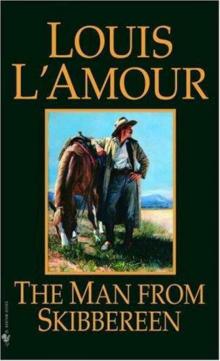 Novel 1973 - The Man From Skibbereen (v5.0)
Novel 1973 - The Man From Skibbereen (v5.0) Novel 1965 - The High Graders (v5.0)
Novel 1965 - The High Graders (v5.0) The Sacket Brand (1965) s-12
The Sacket Brand (1965) s-12 Rivers West
Rivers West Novel 1970 - The Man Called Noon (v5.0)
Novel 1970 - The Man Called Noon (v5.0) Education of a Wandering Man
Education of a Wandering Man The Collected Short Stories of Louis L'Amour, Volume 1
The Collected Short Stories of Louis L'Amour, Volume 1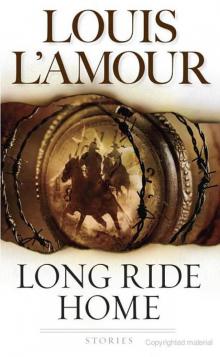 Collection 1989 - Long Ride Home (v5.0)
Collection 1989 - Long Ride Home (v5.0) Callaghen
Callaghen Collection 1999 - Beyond The Great Snow Mountains (v5.0)
Collection 1999 - Beyond The Great Snow Mountains (v5.0) West of the Tularosa
West of the Tularosa End Of the Drive (1997) s-7
End Of the Drive (1997) s-7 Novel 1986 - Last Of The Breed (v5.0)
Novel 1986 - Last Of The Breed (v5.0)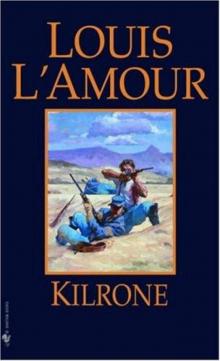 Novel 1966 - Kilrone (v5.0)
Novel 1966 - Kilrone (v5.0) Chancy
Chancy Desert Death-Song
Desert Death-Song Novel 1959 - The First Fast Draw (v5.0)
Novel 1959 - The First Fast Draw (v5.0) Kilkenny 02 - A Man Called Trent (v5.0)
Kilkenny 02 - A Man Called Trent (v5.0) Lost Trails
Lost Trails Novel 1972 - Callaghen
Novel 1972 - Callaghen Novel 1966 - Kid Rodelo (v5.0)
Novel 1966 - Kid Rodelo (v5.0) The Collected Short Stories of Louis L'Amour, Volume 2
The Collected Short Stories of Louis L'Amour, Volume 2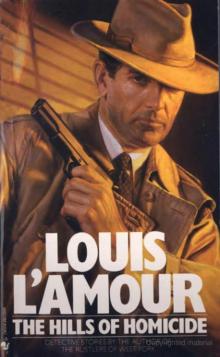 Collection 1983 - The Hills Of Homicide (v5.0)
Collection 1983 - The Hills Of Homicide (v5.0) Novel 1969 - Conagher (v5.0)
Novel 1969 - Conagher (v5.0) Radigan
Radigan High Lonesome
High Lonesome Bendigo Shafter
Bendigo Shafter Novel 1954 - Utah Blaine (As Jim Mayo) (v5.0)
Novel 1954 - Utah Blaine (As Jim Mayo) (v5.0) Collection 1990 - Grub Line Rider (v5.0)
Collection 1990 - Grub Line Rider (v5.0)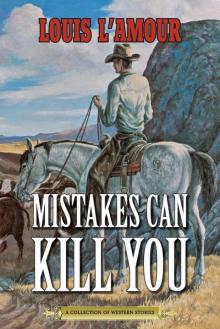 Mistakes Can Kill You
Mistakes Can Kill You The Iron Marshall
The Iron Marshall Novel 1963 - Dark Canyon (v5.0)
Novel 1963 - Dark Canyon (v5.0) Novel 1955 - Heller With A Gun (v5.0)
Novel 1955 - Heller With A Gun (v5.0) Novel 1978 - Bendigo Shafter (v5.0)
Novel 1978 - Bendigo Shafter (v5.0)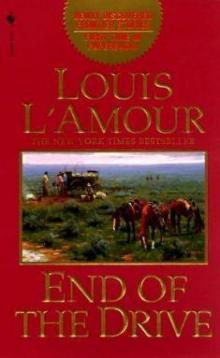 Collection 1997 - End Of The Drive (v5.0)
Collection 1997 - End Of The Drive (v5.0) Fair Blows the Wind
Fair Blows the Wind Talon & Chantry 07 - North To The Rails (v5.0)
Talon & Chantry 07 - North To The Rails (v5.0) The Trail to Crazy Man
The Trail to Crazy Man To the Far Blue Mountains (1976) s-2
To the Far Blue Mountains (1976) s-2 Collection 1981 - Buckskin Run (v5.0)
Collection 1981 - Buckskin Run (v5.0) Collection 2008 - Big Medicine (v5.0)
Collection 2008 - Big Medicine (v5.0) Collection 2003 - From The Listening Hills (v5.0)
Collection 2003 - From The Listening Hills (v5.0)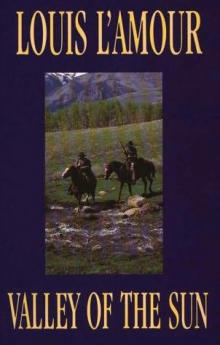 Collection 1995 - Valley Of The Sun (v5.0)
Collection 1995 - Valley Of The Sun (v5.0) Glory Riders
Glory Riders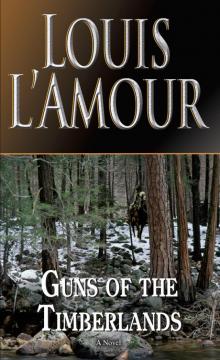 Guns of the Timberlands
Guns of the Timberlands The Collected Short Stories of Louis L'Amour, Volume Four
The Collected Short Stories of Louis L'Amour, Volume Four Novel 1968 - Brionne (v5.0)
Novel 1968 - Brionne (v5.0)